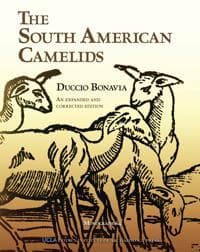
The South American Camelids
397 kr
397 kr
Tidligere laveste pris:
399 kr
Ti., 24 juni - fr., 27 juni
Sikker betaling
14 dagers åpent kjøp
Selges og leveres av
AdlibrisProduktbeskrivelse
Artikkel nr.
0ef40b89-3b42-4453-9cd6-6bb95465bff0
The South American Camelids
397 kr
397 kr
Tidligere laveste pris:
399 kr
Ti., 24 juni - fr., 27 juni
Sikker betaling
14 dagers åpent kjøp
Selges og leveres av
AdlibrisLignende toppselgere

POP MART Labubu The Monsters – Exciting Macaron Blind Box 17 cm Vinylfigur | Samleleke | Designerfigur | Originalt produkt
249 kr

1 stk POP MART Labubu 3.0 Big into Energy Blind Box-figur – The Monsters Vinyl Plysch Hänge 17 cm (tilfeldig farge, enkel pakke)
249 kr

POP MART Labubu The Monsters – Big into Energy Series Blind Box 17 cm Vinylfigur | Samlefigur | Designerleke | Originalt produkt
249 kr

1 stk POP MART Labubu 2.0 The Monsters Macaron Blind Box Plysjfigur (tilfeldig farge, 17 cm, generasjon 2, 1-pakning)
249 kr

1 kpl POP MART Labubu The Monsters Spennende Macaron Plysjfigur leketøy Blind Box (tilfeldig farge, 17 cm, 1 pakke)
239 kr

Øreputer for Bose QuietComfort - QC35/QC25/QC15/AE2 Hodetelefoner Svart
99 kr

Pop Mart Labubu Zimomo enkelin riipus 17,5 cm
349 kr

Pop Mart Labubu Stitch Sleep Snack Series
349 kr

Labubu The Monsters Macaron Blind Box fra POP MART
259 kr

INF TYPE-C Dual SD/TF-kortleser for rask dataoverføring 0
99 kr
Tidligere laveste pris:
107 kr
Anbefalinger til dig

3-Pak - Fidget Spinners med Sugekopp for Barn
119 kr
Tidligere laveste pris:
139 kr

Toppik - 27,5g - Black - Svart
345 kr

2-Pak - Lader for iPhone - Hurtiglader - Adapter + Kabel 20W USB-C
199 kr

Filter for MSPA oppblåsbare bassenger FD2089 4-pakning
275 kr
Tidligere laveste pris:
365 kr

Luftrenseenhet - Renser / Saniterer luften - 20,000 mg/h
599 kr

Dansende kaktus, snakkende kaktusleke gjentar det du sier
160 kr
Tidligere laveste pris:
234 kr

K18 Leave-In Molecular Repair Hair Mask 150 ml
1 071 kr

Rasasi Parfyme for menn Rasasi Hawas Ice EDP, 100 ml
652 kr

10x Premium hjørnebeskyttelse og kantbeskyttelse for barn
119 kr
Tidligere laveste pris:
146 kr

Armaf Club de Nuit Intense Man Eau De Parfum 200 ml
677 kr